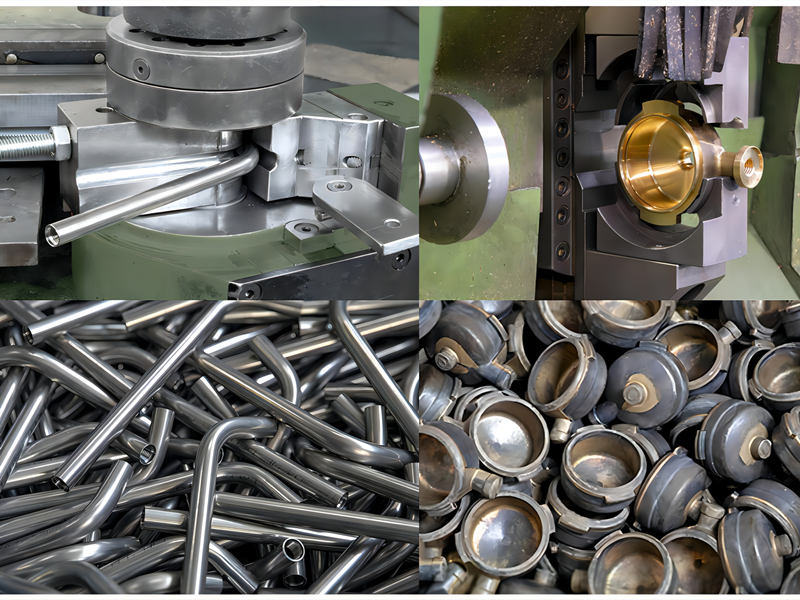Introduction
https://incomepultrusion.com/ Machines are an integral part of our daily lives, from the appliances in our homes to the complex mechanisms in industries. Behind every machine’s functionality lies a world of intricate components known as machine parts. In this article, we’ll delve into the realm of machine parts, exploring their significance, types, manufacturing processes, materials, and more.
The Importance of Machine Parts
Machine parts are the backbone of any mechanical system. They are the components that work in harmony to ensure the proper functioning of a machine. Without these parts, machines would be rendered useless. From engines in automobiles to turbines in power plants, machine parts play a pivotal role in ensuring efficiency and reliability.
Types of Machine Parts
Primary Machine Parts
Primary machine parts are the core components responsible for a machine’s primary function. These include engines, gears, pistons, and rotors.
Secondary Machine Parts
Secondary machine parts, although not directly involved in the primary function, are essential for support and control. Bearings, nuts, bolts, and seals fall under this category.
Materials Used in Machine Parts
Machine parts are crafted from a variety of materials, each selected for its specific properties. Common materials include steel, aluminum, titanium, and composite materials.
Manufacturing Processes
Machine parts are created using various manufacturing processes, depending on the material and intended use.
Machining
Machining involves shaping and finishing materials through processes like cutting, drilling, and milling. It’s a precise method commonly used for metal parts.
Casting
Casting is the process of pouring molten material into a mold to create a desired shape. It’s widely used for components with complex geometries.
Forging
Forging involves shaping metal by applying pressure, typically by hammering or pressing. It enhances the material’s strength and durability.
3D Printing
3D printing is an emerging technology that allows for precise and customizable machine parts. It’s particularly valuable for rapid prototyping.
Quality Control in Machine Parts Production
Maintaining high-quality standards is crucial in machine parts production. Stringent quality control measures ensure that each component meets the required specifications, enhancing reliability and safety.
Maintenance and Replacement
Machine parts undergo wear and tear over time. Regular maintenance and timely replacement of worn-out parts are essential to ensure the longevity of machines.
The Evolution of Machine Parts
Machine parts have evolved significantly over the years, thanks to technological advancements. Modern materials, manufacturing techniques, and designs have revolutionized the field of machine part production.
Sustainable Machine Parts
In an era of environmental consciousness, the manufacturing of sustainable machine parts is gaining momentum. Materials and processes that reduce environmental impact are being explored.
Challenges in Machine Parts Manufacturing
Manufacturers face challenges such as cost control, material selection, and meeting the ever-increasing demands for efficiency and performance.
Future Innovations
The future holds exciting possibilities for machine parts. From nanotechnology to smart materials, innovations promise to redefine the world of mechanical components.
Conclusion
Machine parts are the unsung heroes behind the machinery that drives our world. Their intricate designs, precise manufacturing, and constant evolution make them the foundation of mechanical excellence. Understanding their significance is key to appreciating the engineering marvels that surround us.
FAQs
Q1: How long do machine parts typically last?
Machine part lifespan varies depending on factors like use, maintenance, and quality. Some parts may last for decades, while others may require frequent replacement.
Q2: Can machine parts be recycled?
Yes, many machine parts can be recycled, contributing to sustainability efforts in manufacturing.
Q3: What are the primary causes of machine part failure?
Machine part failure can result from factors like wear and tear, overheating, corrosion, and material fatigue.
Q4: Are machine parts interchangeable between different brands and models?
Not always. Machine parts are often designed specifically for the machine they serve, although some standardization exists in certain industries.
Q5: How are machine parts tested for quality?
Quality testing involves various methods, including dimensional checks, material analysis, and stress testing to ensure machine parts meet performance and safety standards.
Machine parts are the unsung heroes of our modern world, working silently to keep our lives running smoothly. They may be overlooked, but their significance cannot be underestimated. From the primary components that drive machines to the secondary parts that support them, the world of machine parts is a fascinating one, filled with innovation and precision. As technology advances, we can only expect more exciting developments in this critical field.




